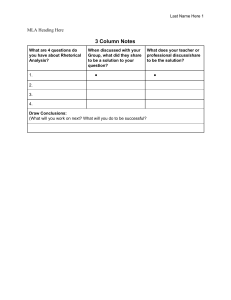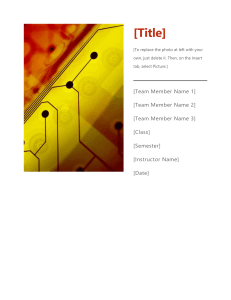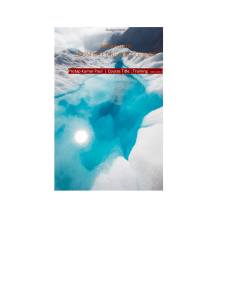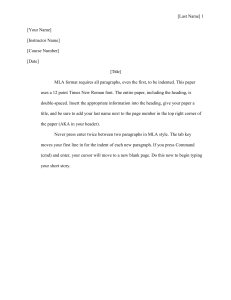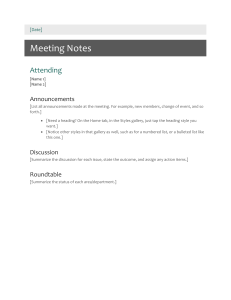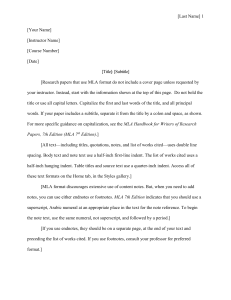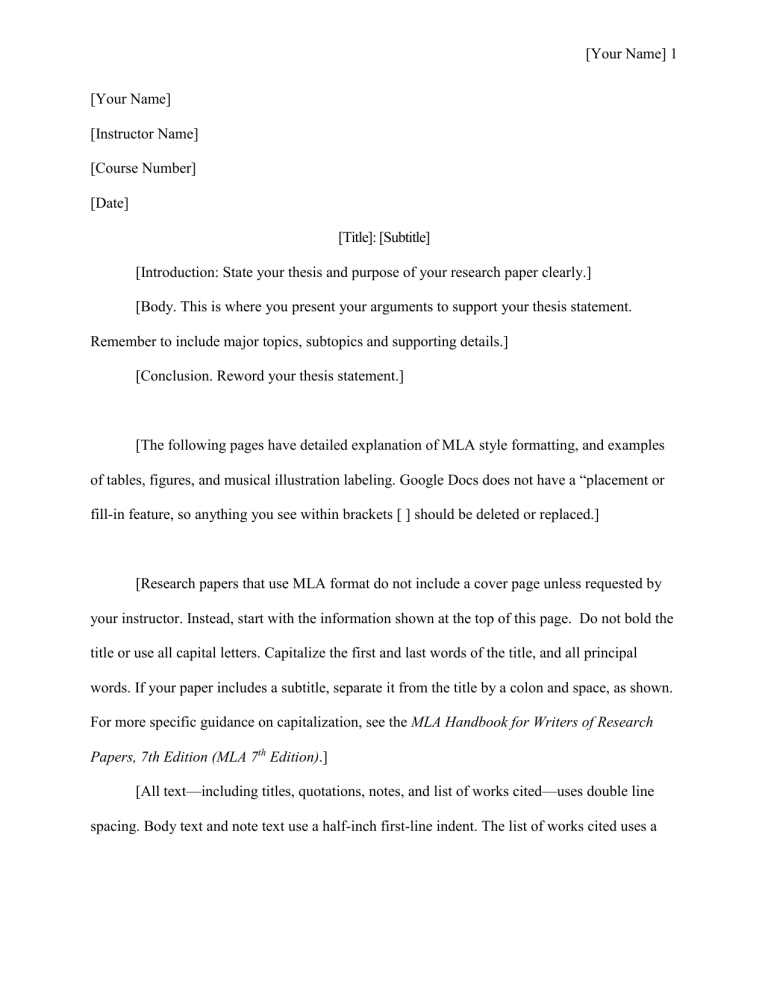
[Your Name] 1 [Your Name] [Instructor Name] [Course Number] [Date] [Title]: [Subtitle] [Introduction: State your thesis and purpose of your research paper clearly.] [Body. This is where you present your arguments to support your thesis statement. Remember to include major topics, subtopics and supporting details.] [Conclusion. Reword your thesis statement.] [The following pages have detailed explanation of MLA style formatting, and examples of tables, figures, and musical illustration labeling. Google Docs does not have a “placement or fill-in feature, so anything you see within brackets [ ] should be deleted or replaced.] [Research papers that use MLA format do not include a cover page unless requested by your instructor. Instead, start with the information shown at the top of this page. Do not bold the title or use all capital letters. Capitalize the first and last words of the title, and all principal words. If your paper includes a subtitle, separate it from the title by a colon and space, as shown. For more specific guidance on capitalization, see the MLA Handbook for Writers of Research Papers, 7th Edition (MLA 7th Edition).] [All text—including titles, quotations, notes, and list of works cited—uses double line spacing. Body text and note text use a half-inch first-line indent. The list of works cited uses a [Your Name] 2 half-inch hanging indent. Table titles and source text use a quarter-inch indent. Access all of these text formats on the Home tab, in the Styles gallery.] [MLA format discourages extensive use of content notes. But, when you need to add notes, you can use either endnotes or footnotes. MLA 7th Edition indicates that you should use a superscript, Arabic numeral at an appropriate place in the text for the note reference. To begin the note text, use the same numeral, not superscript, and followed by a period.] [If you use endnotes, they should be on a separate page, at the end of your text and preceding the list of works cited. If you use footnotes, consult your professor for preferred format.] [For quotations of more than four lines, indent the quote one inch from the left margin and do not use quotation marks. To apply this formatting, on the Home tab, in the Styles gallery, click Quote. For shorter quotations, you can put them in quotation marks, and incorporate them directly into text.] [Your Name] 3 Table 1 [This Table Title Uses a Style Named “Table Title”, Available on the Home Tab, in the Styles Gallery] Column Heading Column Heading Column Heading Column Heading Row Heading Table data Table data Table data Row Heading Table data Table data Table data Row Heading Table data Table data Table data Source: [This source text uses a style named “Table Source”, available on the Home tab, in the Styles gallery.] a. [This note text uses a style named “Table Note”, available on the Home tab, in the Styles gallery. Table notes use a lowercase letter instead of Arabic numerals to differentiate them from the notes to body content.] Название диаграммы 6 5 4 3 2 1 0 Category 1 Category 2 Series 1 Category 3 Series 2 Series 3 Category 4 [Your Name] 4 Fig. 1. [This figure caption uses the No Indent style, available on the Home tab, in the Styles gallery. Label figures with the abbreviated “Fig.” and a figure number.] Works Cited [When using Sorc’d, your Works Cited list will be formatted automatically, depending on the style you have selected in the dropdown from the Word add-in. To install the add-in, go to the INSERT tab and search for “Sorc’d” under “My add-ins.” For in-text citations, use the format (AuthorsLastName Pages) such as the one shown at the end of this paragraph.] (AuthorLastName Pages) For additional guidance on formatting your research paper, consult MLA 7th Edition as well as your instructor.

